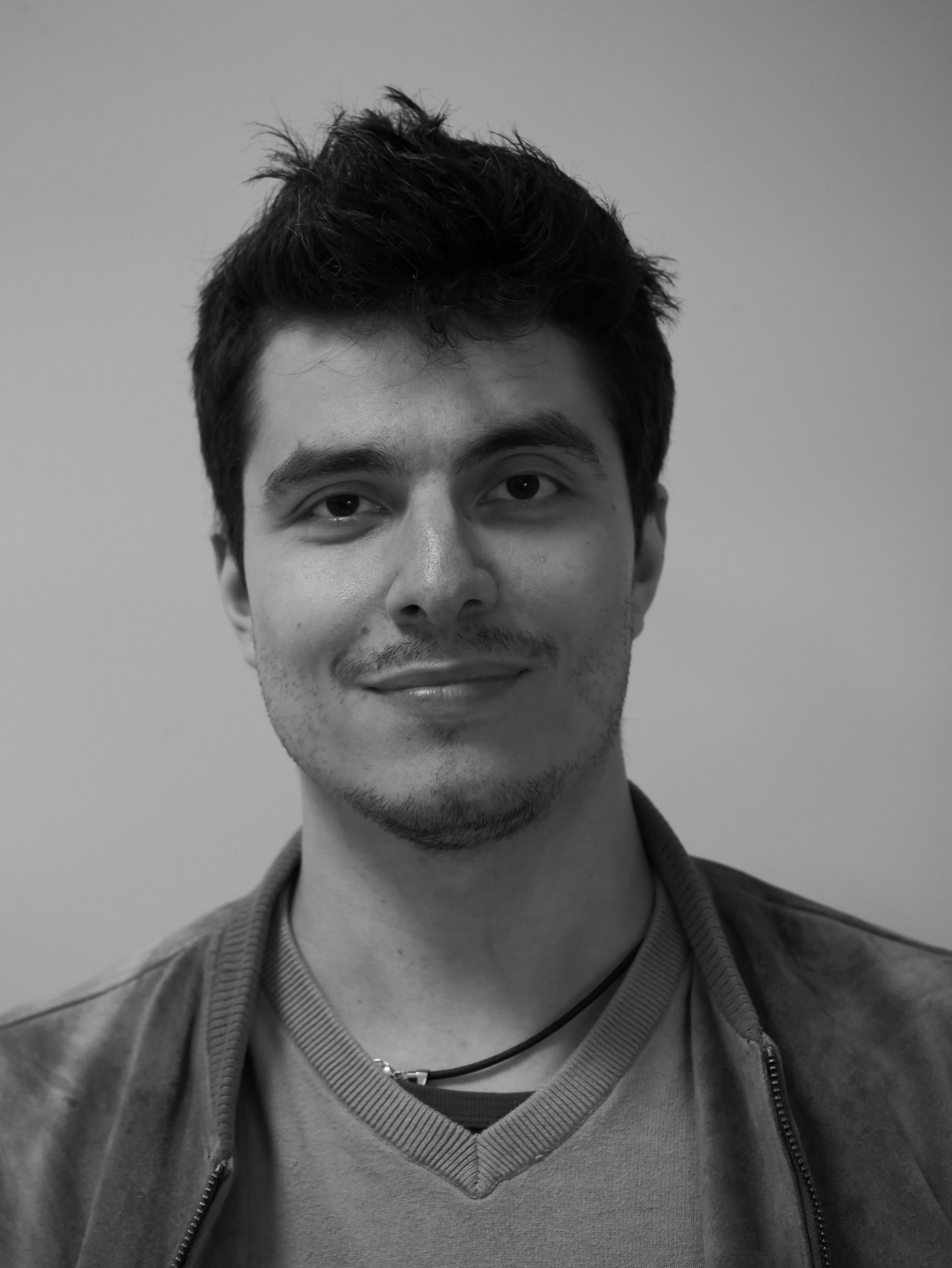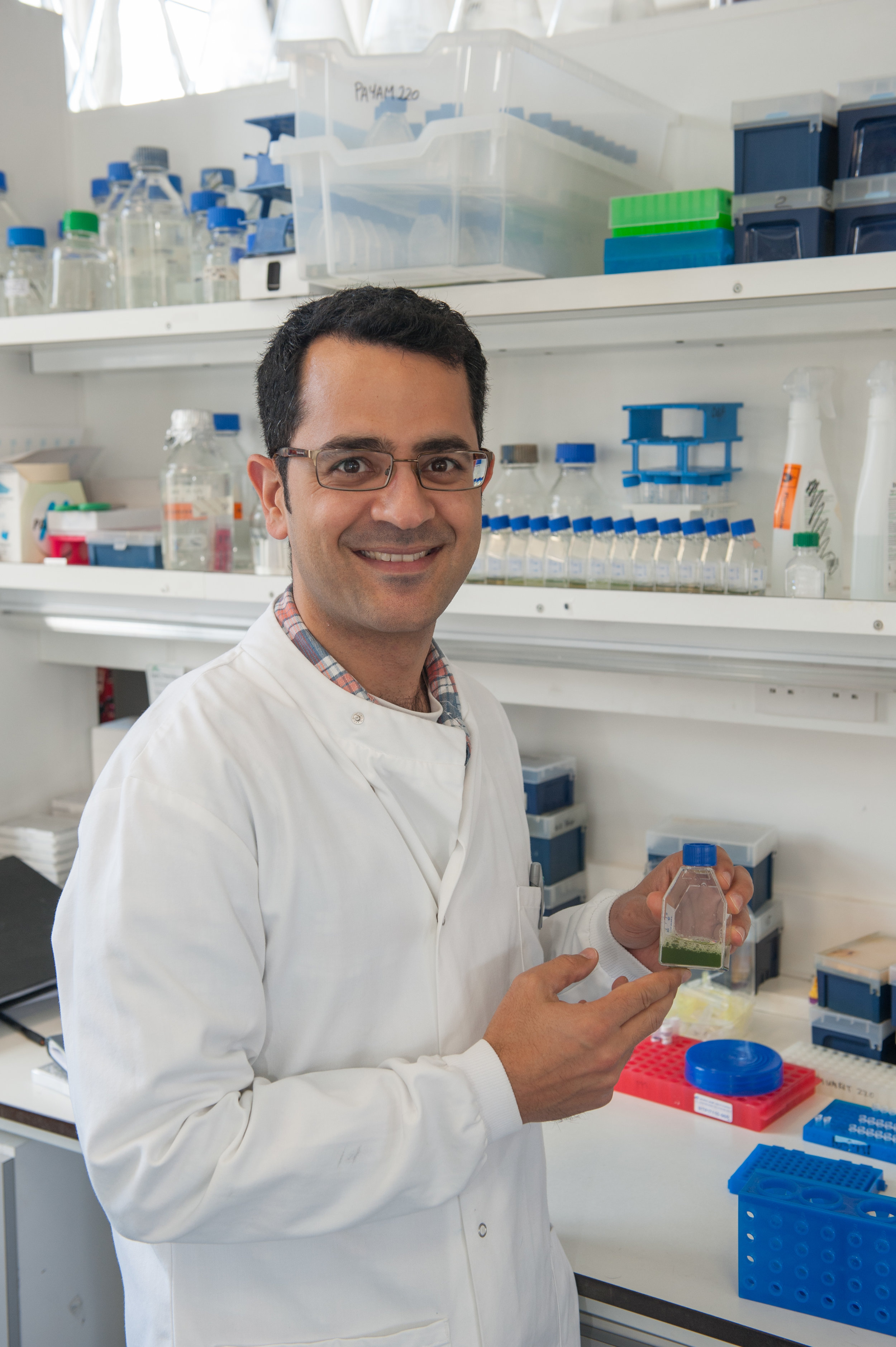Implementation of a synthetic transcriptional AND gate in the chloroplast of Chlamydomonas reinhardtii
This project aims to develop a synthetic transcriptional AND gate in the chloroplast of Chlamydomonas reinhardtii.
The Idea
Chloroplasts are among the most attractive substrates for biological engineering. Compared to nuclear transformation, integration of a transgene into the chloroplast genome comes with a number of notable advantages: i) great precision of genetic engineering due to highly efficient homologous recombination, ii) the opportunity to stack multiple transgenes within synthetic operons, iii)the absence of mechanisms for epigenetic transgene silencing, iv) immense levels of overexpression attainable (Oey et al. 2009), and v) increased biosafety due to the effective absence of chloroplasts from pollen (Bock 2015). Despite these features, the chloroplast has to date not been widely utilized as a platform for metabolic engineering. One of the major limitations to realization of its potential has been a lack of suitable systems for controlling the expression of transgenes from the chloroplast genome. Over the past decade, several conditional expression systems inducible by IPTG (Mühlbauer and Koop 2005), ethanol (Lossl 2005), and theophylline (Verhounig et al. 2010) have been developed. However, all of these systems respond to a single input only. In order to enable more sophisticated control over chloroplast gene expression based on multiple conditions, we propose to develop a synthetic transcriptional AND gate in the chloroplast of Chlamydomonas reinhardtii. C. reinhardtii was chosen as model organism to host the proof‐of‐concept circuit due to its relative ease of chloroplast‐nuclear co‐transformation (Ramundo et al. 2013).
The nuclear component of the proposed circuit is composed of two chloroplast‐targeted halves of split T7 RNA polymerase (T7RNAP; Shis and Bennett 2013) which are conditionally expressed under control of two different input promoters. Co‐induction of the two polymerase halves targeted to the chloroplast will lead to their spontaneous association to form a functional enzyme which will drive expression of a chloroplast‐encoded transgene from a T7 promoter. In scope of the proof of concept proposed here, this transgene will take the shape of a fluorescent reporter quantified in a ratiometric manner (Rudge et al. 2015) to assess functionality of the genetic circuit. In the future, this fluorescent output will be replaced by a transgene modifying secondary metabolism in response to two different input signals.
The Team
Mr Christian Boehm,
Graduate Student, Department of Plant Sciences, University of Cambridge
Dr Payam Mehrshahi,
Postdoctoral Researcher, Department of Plant Sciences, University of Cambridge
Ms Hannah Laeverenz‐Schlogelhofer,
Graduate Student, Department of Physics, University of Cambridge
Project Outputs
Project Report
Summary of the project's achievements and future plans
Project Proposal
Original proposal and application
Project Resources
Vectors from this project will be made openly available via Genbank and Addgene once ready.
Report and Outcomes
Summary
The chloroplast is among the most attractive substrates for biological engineering. One of the major limitations to realization of its potential has been a lack of suitable systems for controlling the expression of transgenes from the chloroplast genome. Over the past decade, several conditional expression systems have been developed. However, all of these systems have been designed responsive to a single input only. In order to enable more sophisticated control over chloroplast gene expression based on multiple conditions, we proposed to develop a synthetic transcriptional AND gate implemented in the chloroplast of Chlamydomonas reinhardtii, based on a modified T7 bacteriophage RNA polymerase (T7RNAP). We designed optimized yellow and cyan fluorescent reporters reflecting codon usage in the C. reinhardtii chloroplast genome, and an optimized T7RNAP gene reflecting codon usage in the C. reinhardtii nuclear genome. We have domesticated the optimized genes to be compatible with Golden Gate assembly. We have designed nuclear transformation vectors encoding intact and split T7RNAP variants under control of constitutive expression signals or riboswitches. We have further attempted introduction of the optimized fluorescent reporters into the C. reinhardtii chloroplast genome, and are waiting to confirm establishment of homoplasmy prior to demonstration of AND gate functionality.
Report and Outcomes
We were awarded an OpenPlantFund grant to implement a synthetic transcriptional AND gate based on a modified split T7RNAP into the chloroplast of the green alga C. reinhartdii. This proposal embraced the following milestones: (i) the synthesis of codon-optimized T7RNAP and fluorescent reporter genes, (ii) the introduction of a ratiometric reporter into the chloroplast genome of C. reinhardtii, and (iii) the implementation of a synthetic transcriptional AND gate in the chloroplast of C. reinhardtii. We have since been joined by Aleix Gorchs-Rovira from the Alison Smith group, who contributes valuable experience in C. reinhardtii chloroplast transformation to our team.
We completed milestone (i) by design and synthesis of optimized fluorescent reporter genes cpmVenus (YFP) and cpmCerulean3 (CFP) adapted to codon usage of the chloroplast genome of C. reinhardtii. We also domesticated these genes for Golden Gate assembly by removing internal BsaI, BsmBI, and BpiI restriction sites. As part of milestone (ii), we proposed to use both fluorescent reporter genes to design a transformation vector enabling ratiometric characterization of gene expression from the C. reinhardtii chloroplast genome. To this end, we first sought to validate expression of both cpmVenus and cpmCerulean3 from the chloroplast genome of C. reinhardtii. We designed ten different variants of a chloroplast transformation vector where the fluorescent proteins were controlled by different expression signals:
(promoter:5’UTR:CDS:3’UTR/Terminator)
- psaA:psaA:cpmVenus/cpmCerulean3:psbA (for constitutive expression)
- psbD:psbD:cpmVenus/cpmCerulean3:psbA (for high, light-dependent expression)
- 16S:atpA:cpmVenus/cpmCerulean3:psbA (for very high expression)
- T7:T7:cpmVenus/cpmCerulean3:T7 (for T7RNAP-dependent expression)
- T7:atpA:cpmVenus/cpmCerulean3:T7 (for T7NAP-dependent expression using native translational enhancers)
We constructed the transformation vectors using Golden Gate assembly at Level 2. In addition to respective reporter expression cassettes outlined below, the transformation vectors each contained a kanamycin resistance cassette and flanking regions for homologous recombination into the psbA intergenic region of the C. reinhardtii chloroplast genome. We introduced all ten transformation vectors into C. reinhardtii using particle bombardment, and recovered kanamycin-resistant colonies. Unfortunately, putative transformants died during iterative propagation for establishment of homoplasmy due to a failure in nutrient supply. We aim to complete repeat biolistic transformations before end of this month.
In parallel, we prepared the nuclear component of the synthetic transcriptional AND gate to be introduced as part of milestone (iii) into transplastomic T7:cpmVenus/cpmCerulean3 C. reinhardtii following confirmation of their homoplasmy and detectable baseline expression cpmCerulean3. We designed and synthesized an optimized T7RNAP gene adapted to codon usage of the nuclear genome of C. reinhardtii. Based thereupon, we designed five different variants of a nuclear transformation vector encoding externally inducible T7RNAP targeted to the C. reinhardtii chloroplast:
- pPSAD:RBCS2 Intron:cTP-PSAD:CrT7RNAP:CA1 3’UTR (for constitutive expression of chloroplast-targeted T7RNAP)
- pPSAD:RBCS2 Intron:cTP-PSAD:N-Term_CrT7RNAP: CA1 3’UTR (for constitutive expression of chloroplast-targeted N-terminal half of split T7RNAP)
- pPSAD:RBCS2 Intron:cTP-PSAD:C-Term_CrT7RNAP: CA1 3’UTR (for constitutive expression of chloroplast-targeted C-terminal half of split T7RNAP)
- pPSAD:RBCS2 Intron:CrTHIC_RS:cTP-PSAD:N-Term_CrT7RNAP: CA1 3’UTR (for riboswitch-regulated expression of chloroplast-targeted N-terminal half of split T7RNAP)
- pPSAD:RBCS2 Intron:CrTHI4_RS:cTP-PSAD:C-Term_CrT7RNAP: CA1 3’UTR (for riboswitch-regulated expression of chloroplast-targeted C-terminal half of split T7RNAP)
- pPSAD:RBCS2 Intron:CrTHIC_RS:cTP-PSAD:N-Term_CrT7RNAP: CA1 3’UTR
- pPSAD:RBCS2 Intron:CrTHI4_RS:cTP-PSAD:C-Term_CrT7RNAP: CA1 3’UTR (for riboswitch-regulated expression of chloroplast-targeted N- & C-terminal halves of split T7RNAP)
We synthesized or PCR-amplified all parts for the above constructs to carry the MoClo syntax and be compatible with Golden Gate assembly. We expect introduction of these vectors into transplastomic T7:mVenus/mCerulean3 to produce expression of the fluorescent reporter from the chloroplast genome only under presence of chloroplast-targeted intact CrT7RNAP, or under coincidence of the chloroplast targeted N-terminal and C-terminal CrT7RNAP fragments. The latter experiment will serve as demonstration of chloroplast-encoded Boolean AND logic in C. reinhardtii.
All vectors designed and constructed as part of this project will be made openly available via Genbank and Addgene within a few months’ time as the vector backbones used in this project have been published as part of separate work conducted under supervision of Alison Smith. Meanwhile, we have made the optimized genes cpmVenuscp, cpmCerulean3cp, and CrT7RNAP available via Genbank accession numbers KY484011, KY484012, and KY484013, respectively






